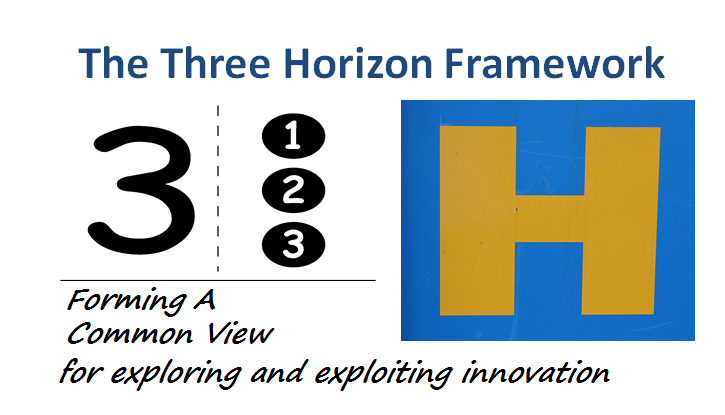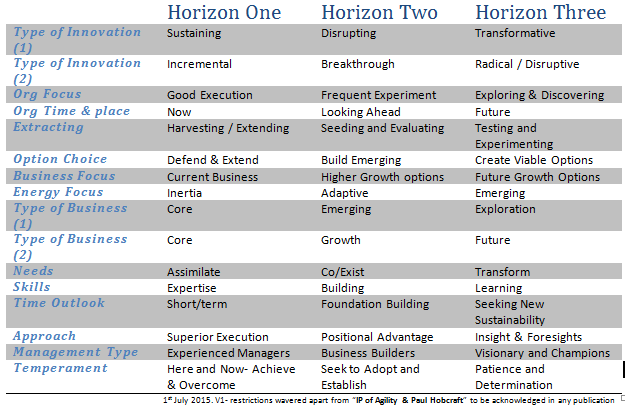
As you may know, I have been writing significantly around the Three Horizons in relationship to innovation.
Initially drawing on the foundation within the McKinsey initial papers, updated here under their enduring ideas, and in particular based on by its original authors of the book “The Alchemy of Growth” by Mehrdad Baghai, Steve Coley, David White and Stephen ColeyThen I discovered the work of the International Futures Forum, based in Scotland, where a group of members have extended the 3H significantly, well beyond McK’s initial work from my perspective, into a broader, more robust methodology tackling complex problems.
It was this IFF work that excited me, it opened up my thinking to find better ways to deepen the innovation connections and framing that could be suggested in the use of this three horizon frame in exploring and expanding different techniques and approaches.
Connecting the innovation thinking dots
I realized the significant role the three horizon framework could have within our innovative thinking that was still missing and decided to take this further, beyond the original authors view.
I have written about this since my first post “The three horizon approach to innovation” “in September 2010, after some initial prompting from Tim Kastelle who shares in its value and place in our innovation thinking.
Here I want to provide a common language and approach to the three horizons
I have continued to build my understanding in practice and in my research on the 3H and have published this thinking through a series of articles and posts found as a collection in my insights and thinking page, that focus specifically on relating the 3H to the innovation space for dialogues, planning, portfolio debates, differentiating the distinctions between the three and generally arguing for its value in the management of innovation.
This intent has been to grow awareness and offer a better understanding of how it works, fits and has this great value for innovation’s management that should be within all organizations thinking around working through its innovation ambitions for the future and relating these to the reality of the present.
Go to the “search” on this site and enter “three horizons” you can view the different articles I’ve published on this, or equally you can download these as summary series within my “insights and thinking” page under the three horizons. They do provide a detailed build on this frame.
Understanding the way to approach each of the horizons
I published in August 2011 a suggested: “emerging framework to help navigate across the three horizons” in a further blog which provides clarity of how to structure, frame and think in these different horizons. This is how:

Pushing this thinking further I felt we needed a common metric of understanding
Recently I have taken this further and felt there was a need to provide a common language and application for approaching the three horizons. We need to look beyond where we stand
These common metrics of understanding I’m publishing for the first time here
I believe this can be adopted as a suggested approach to thinking about each horizon separately, covering this from the many different perspectives. I hope this provides for an even greater adoption of the innovative thinking we all need to have in our planning, discussions and management of innovation.


So each Horizon needs a different focus, a different management approach, different goals and different thinking.
If you would like a copy of this as a pdf or download Three Horizon Common Language Table
9 thoughts on “The Three Horizons – Providing a Common Language in its Innovation Use”
Comments are closed.